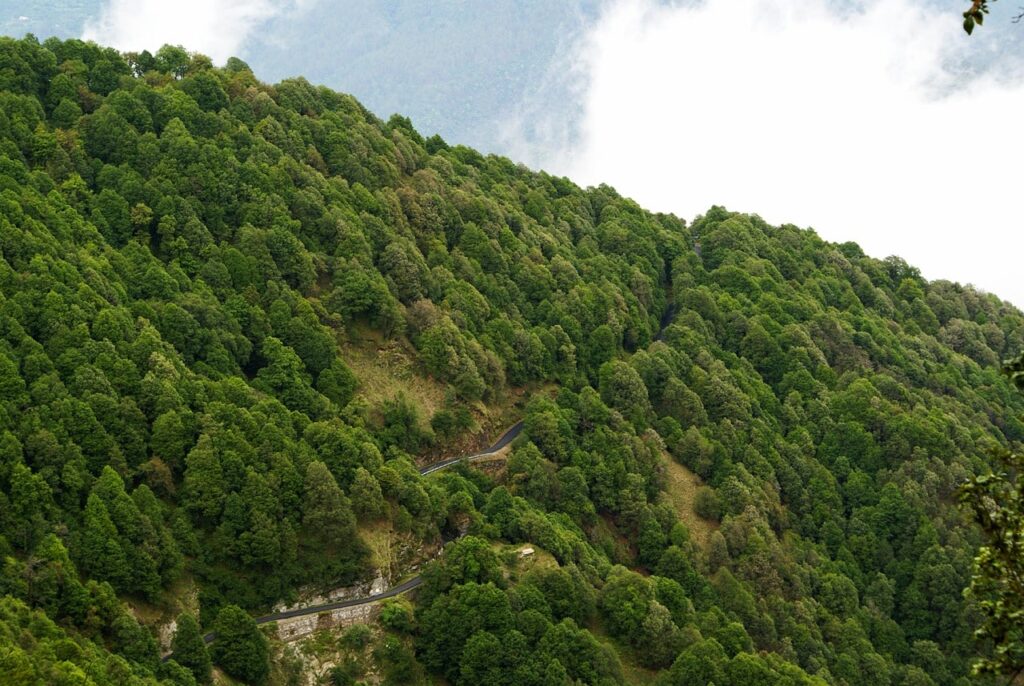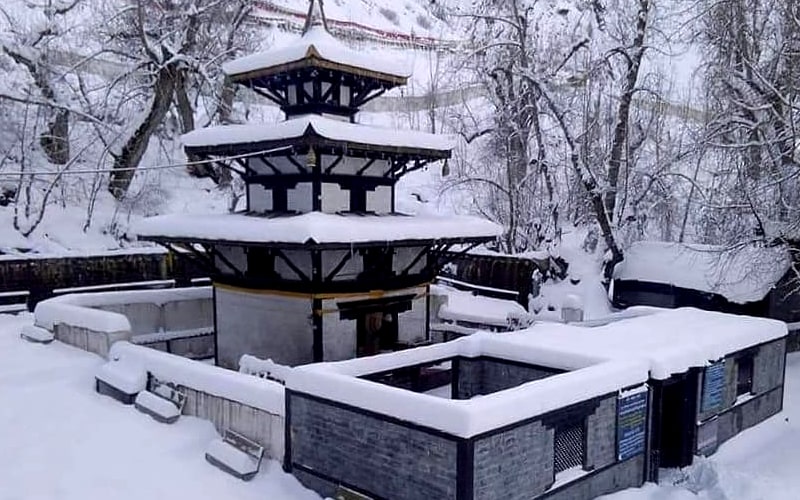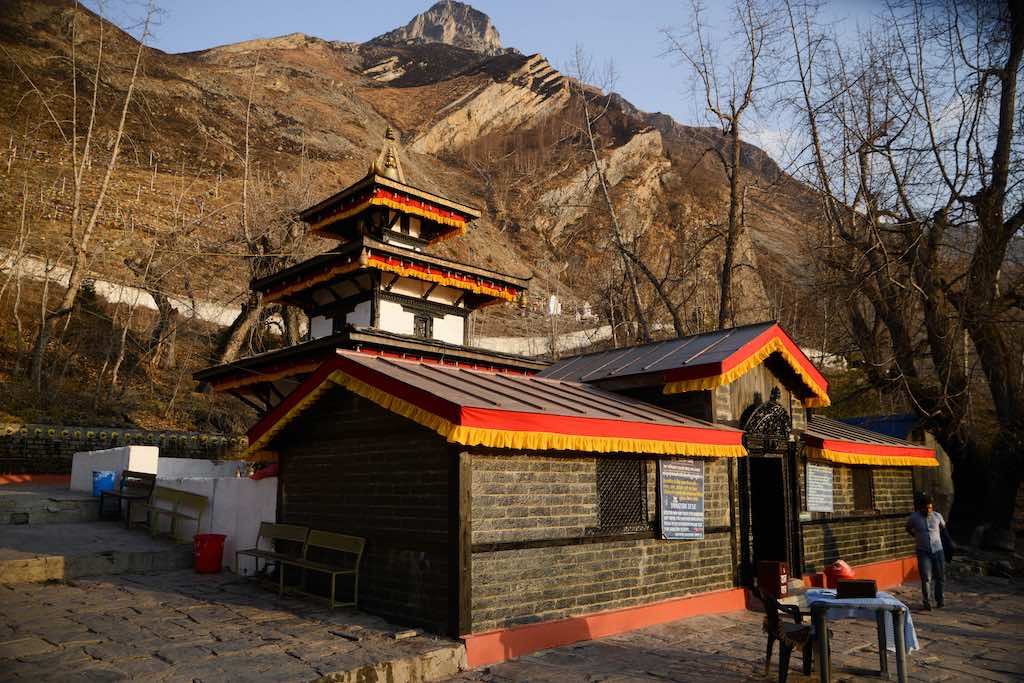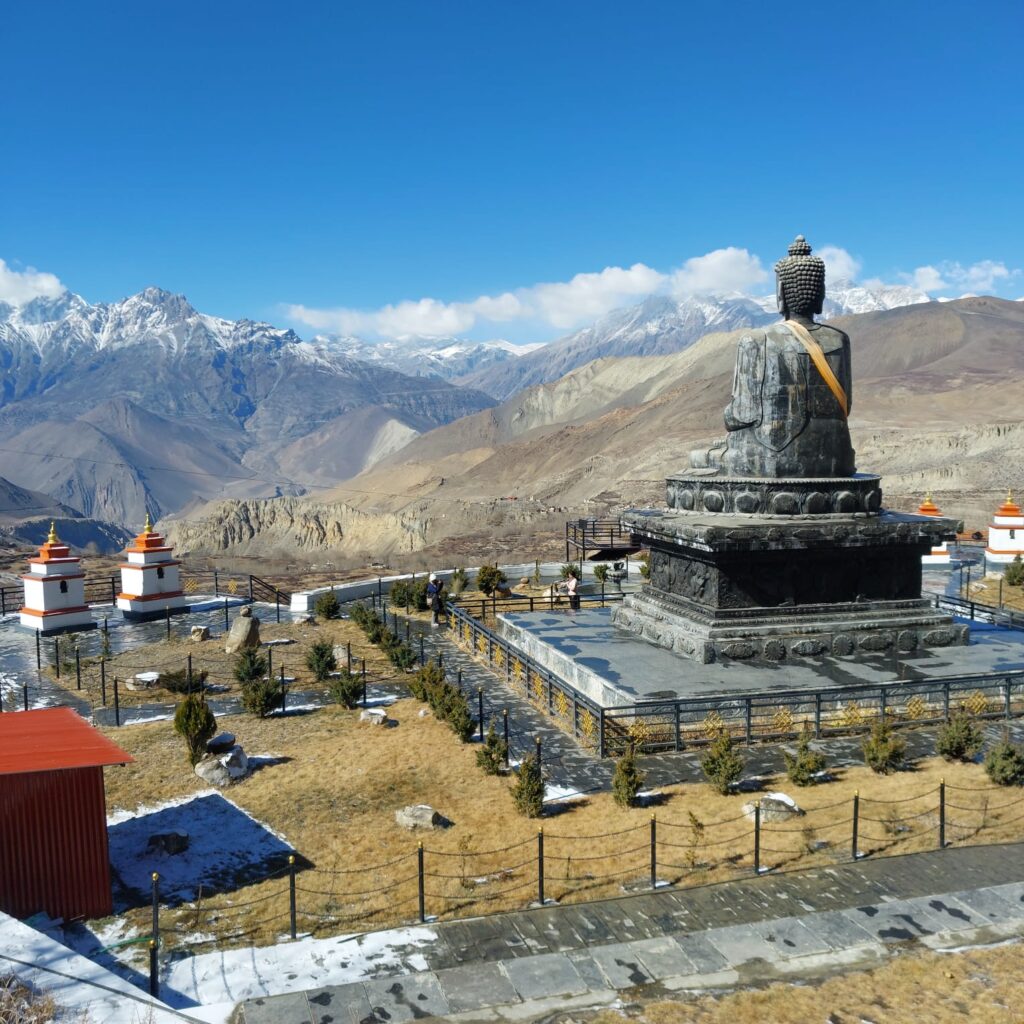The best time to visit Muktinath Temple is whenever you want to visit it as it is accessible year-round and offers pilgrims something different to see in each season, the best time to come is anytime you choose. For example, if you travel to Muktinath Temple in the fall or spring, you will be treated to breathtaking vistas of the Annapurna and Dhaulagiri mountain ranges. Every season offers something different for tourists to discover. Let’s talk about visiting Muktinath Temple in each season in detail.
Autumn (September to November)
Autumn (September to November) is considered to be the best season to visit Muktinath Temple. During this time the weather is clean and green. The skies are clear, which is perfect for travelers to witness the mountain peaks from the distance due to unobstructed views. During this time, the weather is crisp and clear, offering an excellent opportunity to experience the temple’s spiritual aura surrounded by breathtaking mountain views. The skies are mostly blue with minimal rainfall, allowing trekkers and pilgrims alike to embark on the journey to this sacred site with ease. The crisp air and the vibrant colors of autumn enhance the beauty of the landscape, making it a perfect time for both spiritual reflection and outdoor exploration.

Autumn’s stable weather and mild temperatures make it ideal for trekking, with the surrounding forests and hills adorned in hues of orange, red, and yellow. The vibrant foliage and majestic mountains create a tranquil and almost mystical atmosphere, inviting visitors to reflect, meditate, and immerse themselves in the peaceful surroundings. This season is also less crowded compared to the peak summer months, offering a more serene experience at the temple.
Read More: How to reach Muktinath temple?
Spring (March to May)
Spring, March to May, is another best season to visit Muktinath Temple. During this time, the weather is moderate, which means not so hot and not so cold, making it ideal for trekking and visiting as well. During this time, the weather becomes warmer, and the snow from the winter months begins to melt, revealing lush landscapes and vibrant blooms. The surrounding hills and valleys are blanketed with wildflowers, and the air is fresh and invigorating. The gentle temperatures make trekking to Muktinath more comfortable, whether you’re coming via the Annapurna Circuit or the Jomsom-Muktinath trek, as the higher altitudes start to become more accessible with clearer skies.
Winter (December to February)
Winter (December to February) is best for you if you want to play with the snow and want to witness the snowy places of the regions. During the winter, temperatures can drop significantly, especially at higher altitudes, with snow blanketing the surrounding mountains and the temple grounds. While this period brings colder weather, it also offers a unique opportunity to experience the temple in its most peaceful and secluded state. The roads leading to Muktinath may be less crowded, providing a rare opportunity for visitors to reflect and immerse themselves in the quiet beauty of the area.

Monsoon (June to August)
Monsoon (June to August) The monsoon season, from June to August, brings a unique experience to the Muktinath Temple, marked by heavy rainfall and lush landscapes. While this time of year may not be the most popular for trekking, it offers a distinctive chance to experience the temple and its surroundings in a completely different light. The mountains around Muktinath become enveloped in mist and rain, making the environment appear more mystical and serene. The lush green valleys, filled with vibrant vegetation, thrive during the monsoon, creating a breathtaking contrast against the backdrop of the snow-capped peaks of the Annapurna and Dhaulagiri ranges.
Read More: Best time to visit Nepal

However, the monsoon also presents certain challenges. The trails to Muktinath can become slippery, and the rains make trekking more difficult, especially in the higher elevations where the weather can be unpredictable. The roads may also be less accessible due to the wet conditions. Despite these challenges, the monsoon period provides an opportunity for those seeking solitude and a deeper connection with nature. The fewer tourists during this time mean that pilgrims who venture to the temple can enjoy a quiet, more personal spiritual experience. The rains bring a sense of renewal to the land, making it a powerful season for reflection and peace, especially for those who appreciate the raw beauty and power of nature.
Read More: Importance of Cultural Heritage


Pingback: How to reach Muktinath Temple?